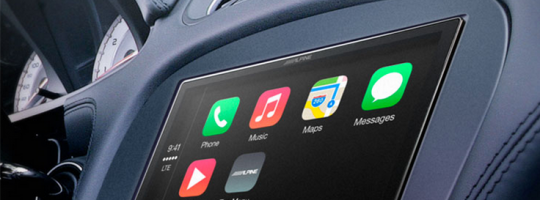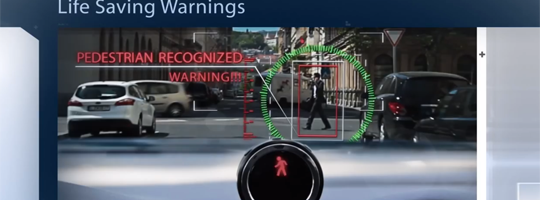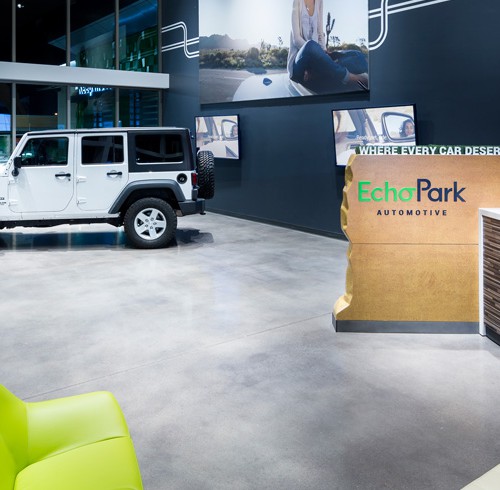IBM Study: What Will Automotive Look Like in 2025?
As some of the major players from the automotive world gathered in Detroit during the past few weeks a lot of new information was released. From cars that drive themselves, to electric vehicles, which can get 200 miles on a single charge – new and innovative products and information have been unveiled. In the midst of the showcases and glamour was a study from IBM automotive about what the future could hold for the automotive industry.
The IBM automotive 2025 Global study results were released and published in a January 15th press release. The study points out an ever evolving digital automotive consumer and the notion that self-driving cars, and their impact by 2025 may not be as large as we think. The study is based on interviews with 175 executives and thought leaders from OEMs and automotive industry supply companies. On the study and its findings, Alexander Scheidt, the Global Automotive Industry Leader of IBM said, “By 2025, the industry will not only recreate our highly personalized and digitized lives inside our cars, but also give consumers a bigger role in defining that experience, whether as a driver or passenger.”
The study had a focus on consumers, specifically how they will be different in 10 years. Part of the study text reads, “consumers not only want to drive cars; they want the opportunity to innovate and co-create them along with related services, such as infotainment.” Infotainment has been the source of numerous headlines in recent weeks. CES in Las Vegas last week showed off the latest in-car infotainment technology. It also served as a reminder to the world that automakers are furiously trying to keep up with the ever technology savvy and demanding consumer.
The study also sought to find out which areas those surveyed feel need greater collaboration with consumers. Sixty-three percent of those executives surveyed felt that ride sharing services need greater customer collaboration. Fifty-nine percent of those polled felt that product design needed more consumer input. Fifty-four percent felt marketing campaigns were an area, which needs more consumer collaboration. Interestingly, 52 percent of those surveyed felt that service and what occurs post sale is an area in which the consumer should have more involvement.
This study points to what technologically advanced vehicles could look like by 2025. The description of vehicles in the future, as outlined in the IBM study points to a near artificial intelligence level of computer taking control of the modern vehicle. The excerpt from the study on this subject reads, “By 2025, the vehicle will be sophisticated enough to configure itself to a driver and other occupants. Also, it will be able to learn, heal, drive and socialize with other vehicles and its surrounding environment.” Some 80 percent of those surveyed in the IBM study felt that vehicles would have strong cognitive reasoning abilities that will allow them to make safe driving decisions.
Another notion that came out of the study is that of vehicle “social networks.” In this case, 57 percent of those surveyed felt that vehicles would communicate with one another. The vehicle-to-vehicle technology would allow communication about road conditions as well as information related to vehicle problems. The thought being vehicles of a certain make could communicate about brand-specific mechanical problems.
How exactly the vehicles could relay this information to vehicle owners wasn’t specified in the study. This is certainly an area that will require further research ahead of a possible governmental V2V technology mandate in 2017.
A major finding of the study is that only 8 percent of those surveyed feel that self-driving cars will be commonplace by 2025. That figure, coming from automakers and parts suppliers seems to be telling. It indicates those behind the creation and assembly of these self-driving vehicles don’t think that they will even be a common sight on roads 10 years from now. However, 87 percent of those who took part in the survey felt lane change and parking assist and other self-driving features would be commonplace by 2025.
It appears that industry insiders feel that vehicles will evolve much more slowly than speculation has led us to believe. Do you put stock in the information from this study? Will it take 15 or 20 years for self-driving cars to catch on as commonplace?













Warning: count(): Parameter must be an array or an object that implements Countable in /home/pg4b1yzvrqqo/domains/test.drivingsalesnews.com/html/wp-includes/class-wp-comment-query.php on line 399